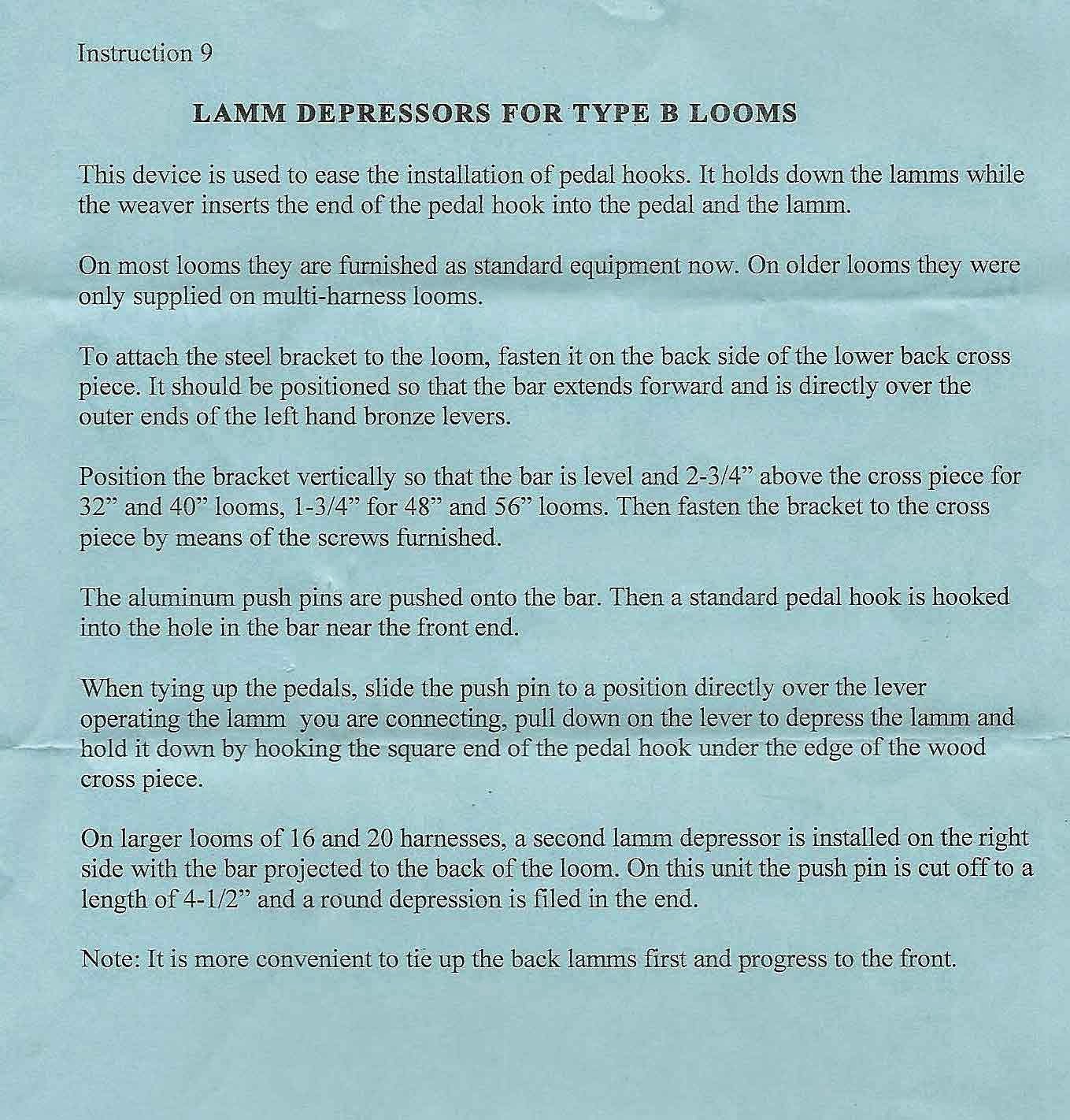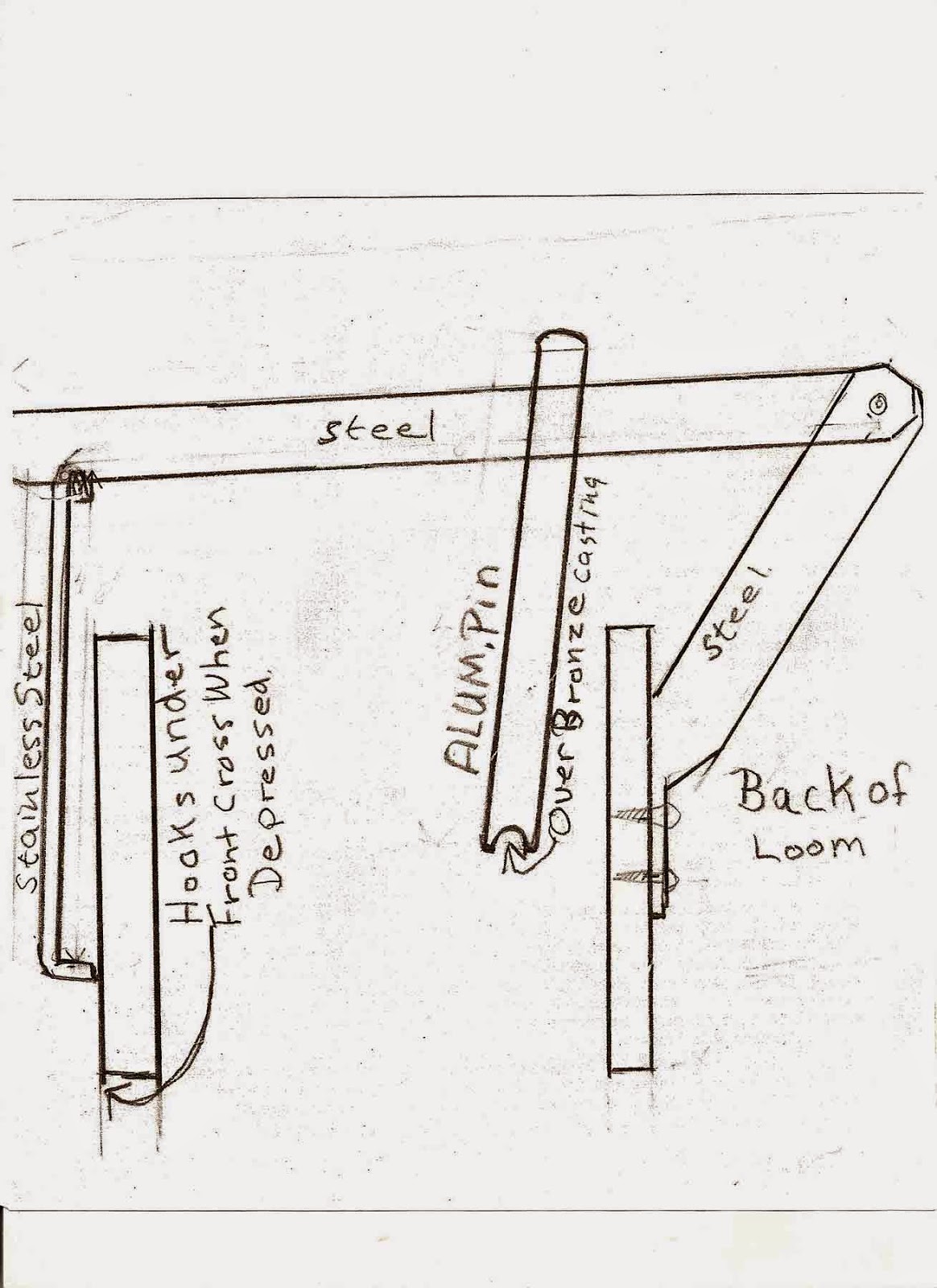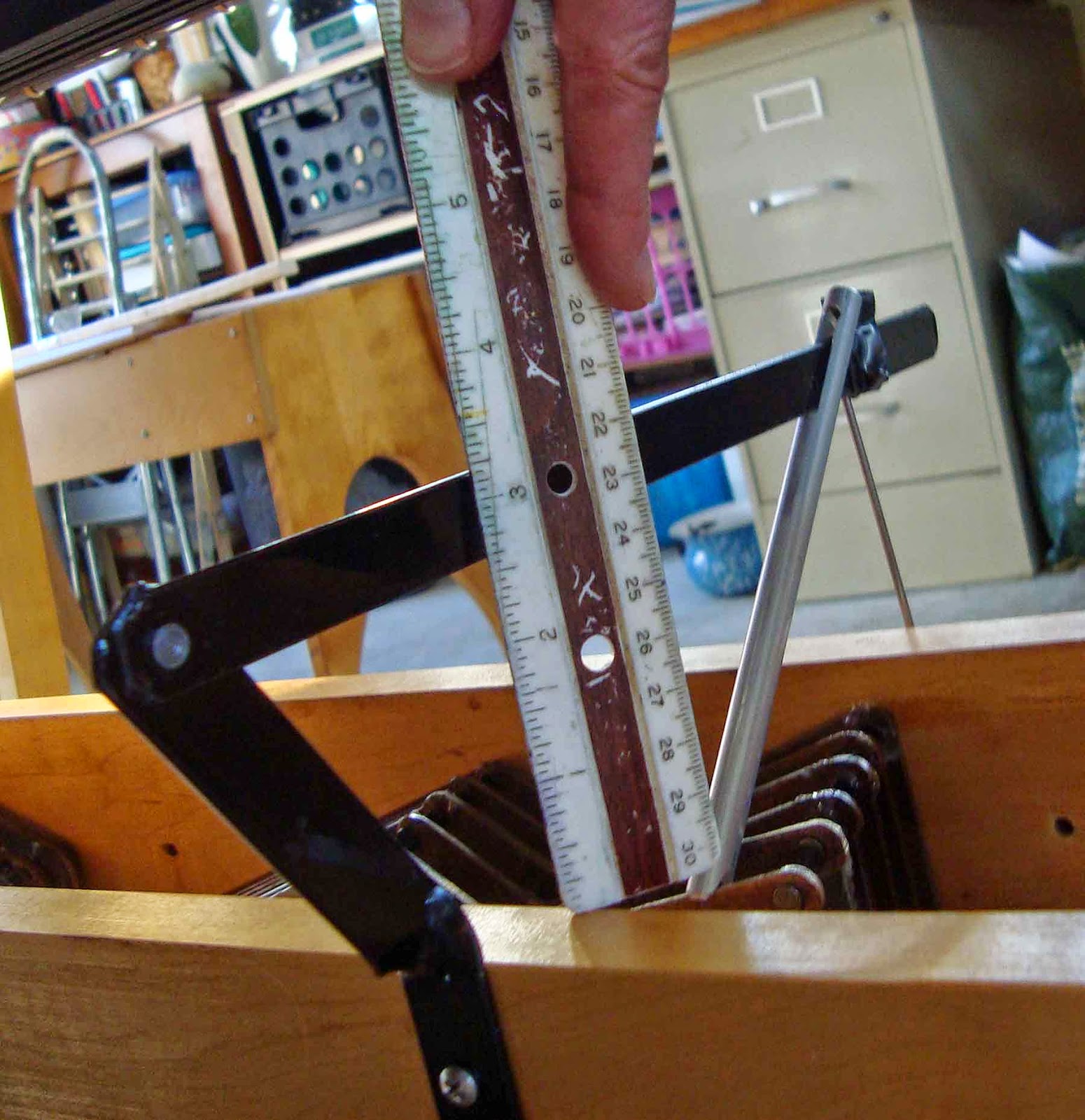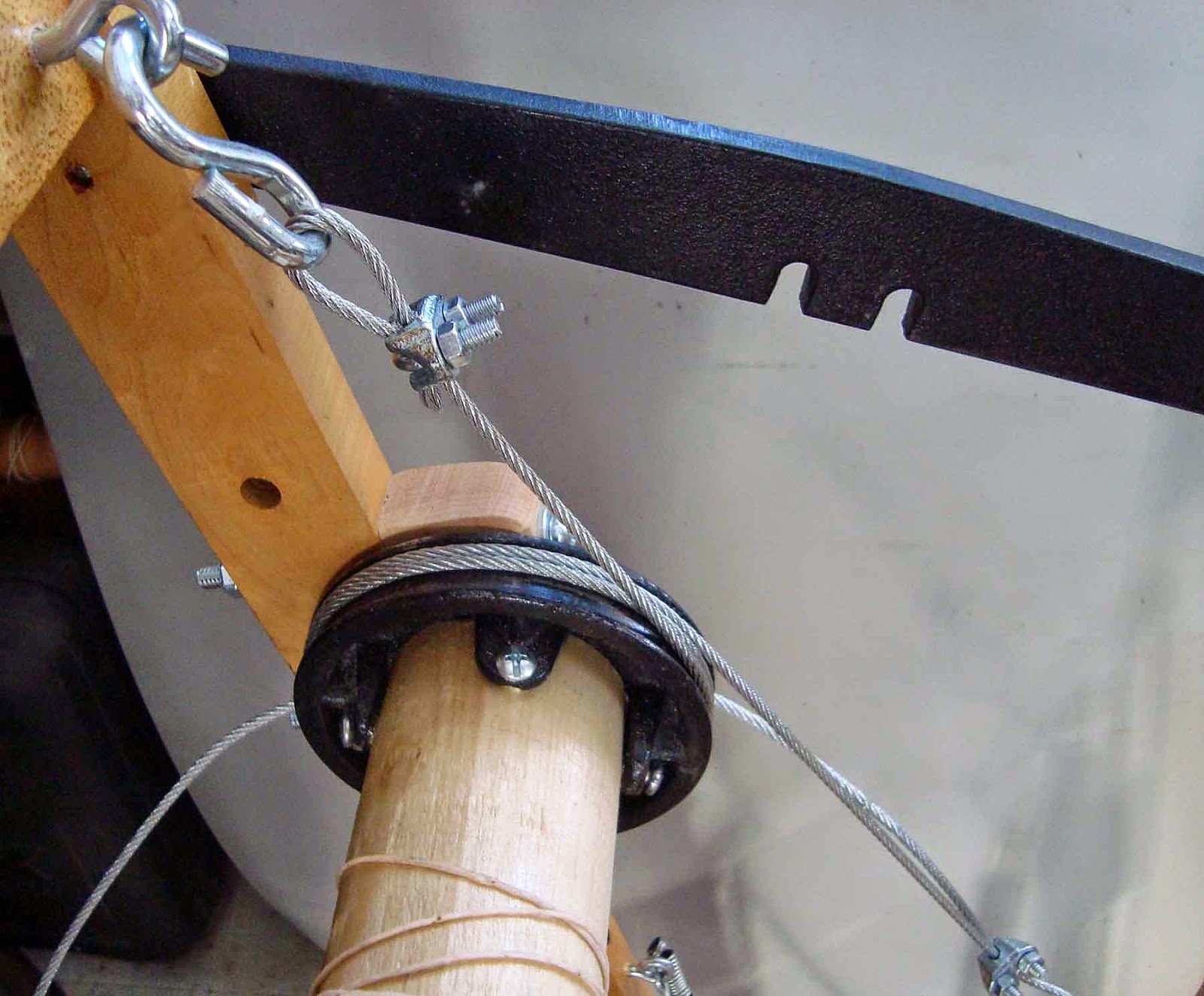Here we go - the BIG job! I know many of you have installed new harnesses on your B model looms and it has been a VERY long time since I have done it. So I thought a detailed report with photos might help those of you are contemplating or in the process of doing this big job.
Here are the instructions from the shop with a few of my notes. If you click on the image it will enlarge enough to read. Basically the instructions are great -so follow them and use my notes and photos as additional support.
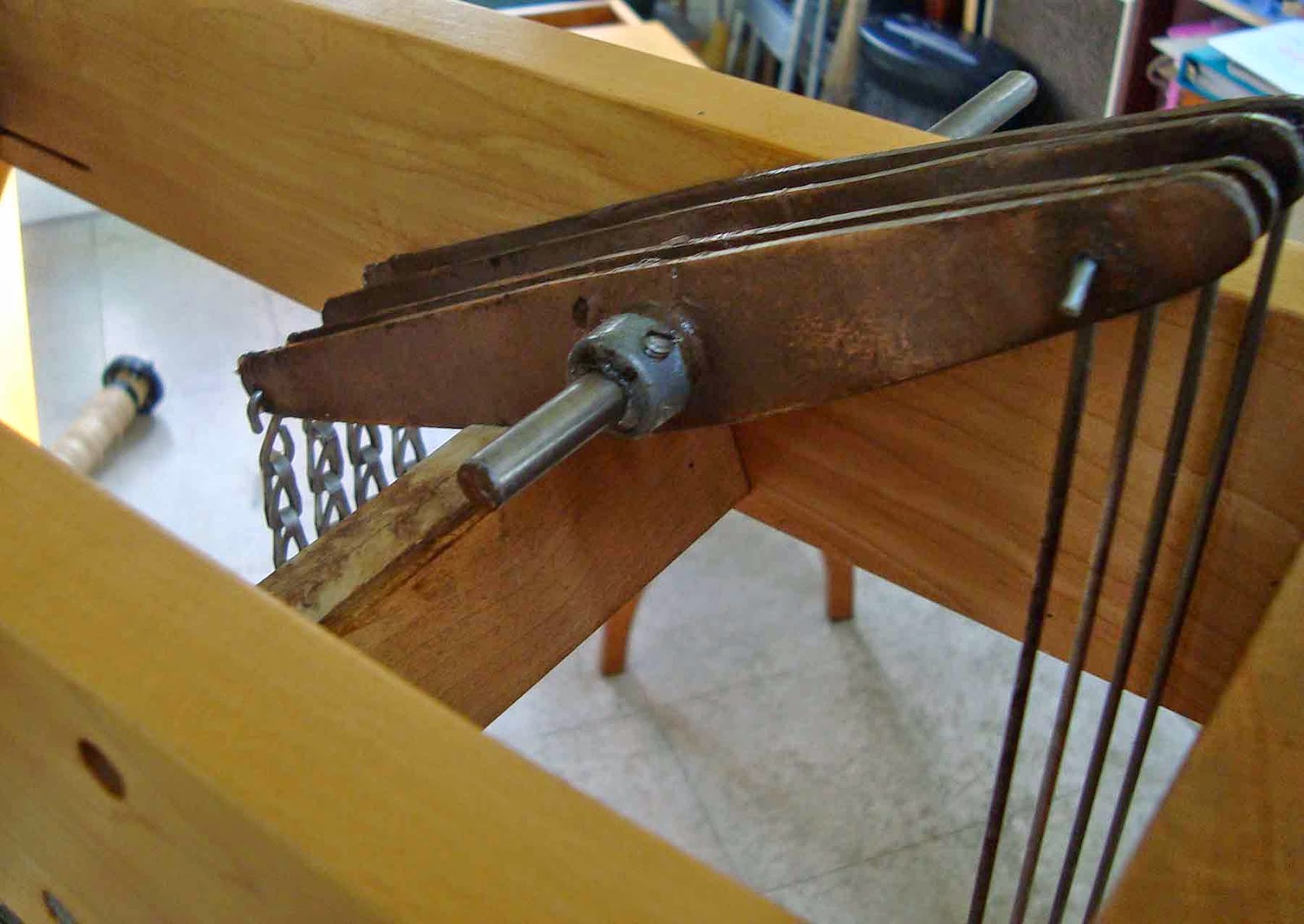 |
| Tap the rod towards the front of the loom. |
Jacks - Loosen the collar in the rod that goes thru the jacks and then tap this metal rod towards the front of the loom. Apply some Vaseline to the existing jacks. Slide on the new jacks and apply more Vaseline. Be sure to keep the jacks in the proper numbered sequence, there are stamped numbers on each jack. Put the collar back on the rod and tighten it down.
Tap the rod back in place.
 |
| Apply Vaseline to the rod between the jacks. |
 |
| Tap the rod back once the jacks are installed. |
 |
| Remove center lamm guide. |
 |
| Apply Vaseline and slide steel rod forward. |
 |
| Add new lamms and apply Vaseline. |
 |
| Support lamms with a prop of the appropriate height. |
Lamms - Remove the wooden Lamm guide (unscrew and lift out). Tap and slide out the steel rod in the lamms. Apply Vaseline to the existing lamms and rod. Slide on the new lamms with more Vaseline. Replace the lamm guide, screw back in place. Place a support under the new lamms to hold them up about the height of the existing lamms.
 |
| Thread the side wires thru the guide. |
Side wires - Slide the side wires through the guide on each side of the castle. Hang the side wires on the jack and then hook them on to the lamm.
Harnesses - Hang each harness from the s hooks and chains. Be sure that the heddle rod clips all face front. The harnesses do not have a specific sequence and can placed in any order.
 |
| Hang the new harnesses from the s hooks. |
 |
| Loosen the collar on the treadle rod. |
 |
| Tap the rod to one side after the collar is loosened. |
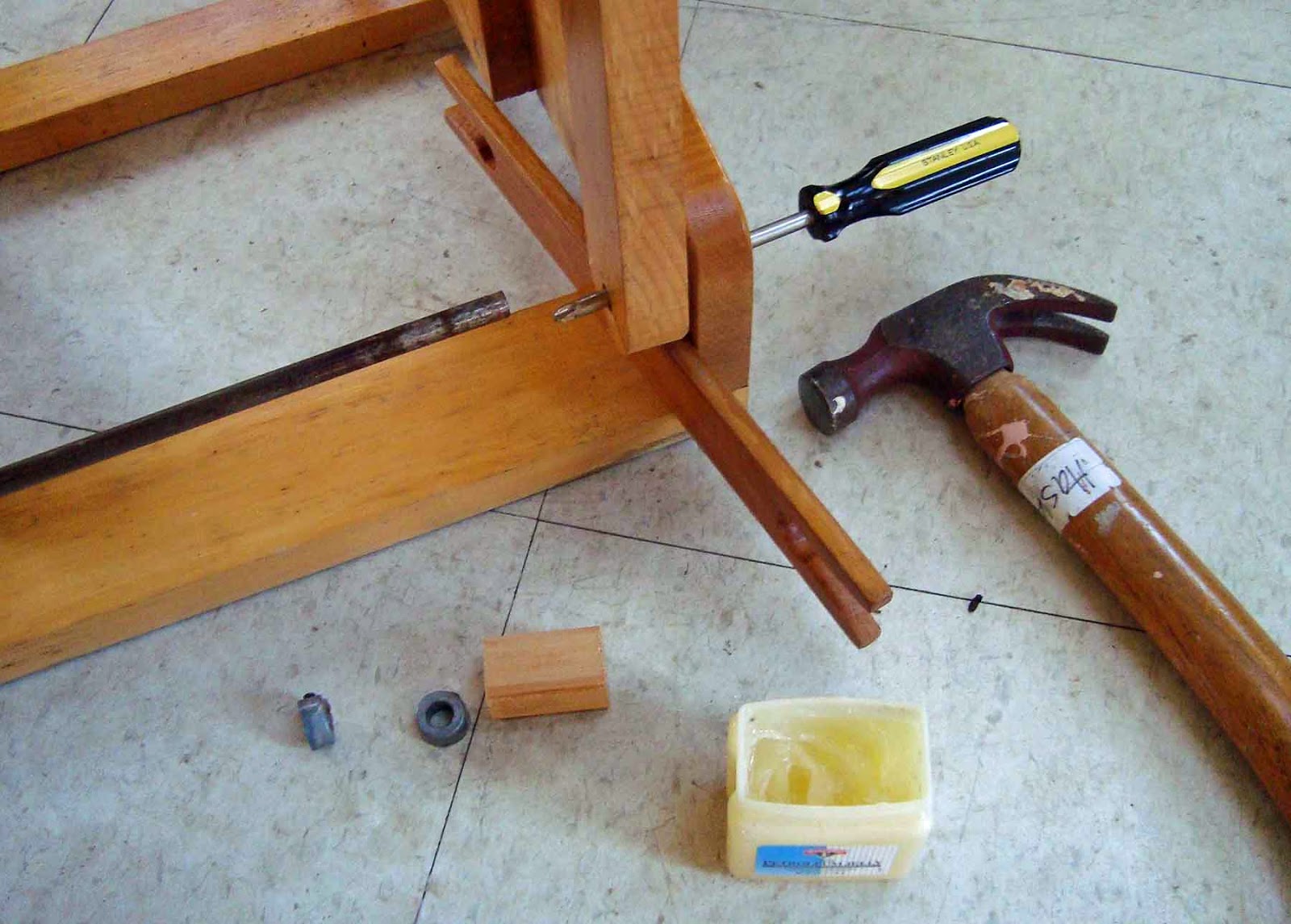 |
| Support the beam upright with a small prop. |
 |
| Add the treadles both right and left. |
Treadles - Remove the collar on the metal rod that goes through the treadles at the back of the loom. I had to use a little WD-40to loosen the screw on my collars - slightly rusted. Tap and slide the metal rod to one side. Ass the rod slides - you will need to place a small support under the beam upright to keep it from dropping down. Tap the rod out enough to add the new treadles - pay attention to placing the treadles sight side up. Slide the spacers on as you go. Slide the collar back on the rod and tap the rod back to the upright. Remember to put the treadles on evenly - balanced on either side of the loom. For example I added two harness units, so I put one treadle on the R and one on the L.
Now test out your new harnesses by adding the tie-up hooks to the treadles and lamms!
PLEASE Refer to the Macomber notes above for more details on all of these steps. My photos and notes are meant as a support to what has already been written for instruction.
Good luck...and happy weaving with more harnesses!!
